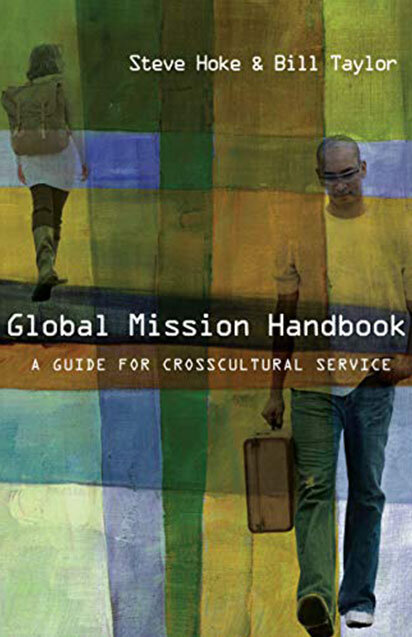July 12, 2017 Missionary Attrition, Part II
On the term, “missionary”
This “M” word has fallen on rather hard times, and I understand some of the reasons. It’s overused and outdated—“it sounds SO colonial”. It has been victimized by reductionism and so generalized, “everybody is a missionary” (with the corollary that if everybody is one then nobody is one, the confusion between “witness” and “M”), and thus has lost currency. Other terms have been helpfully introduced, and I use them in various contexts: cross-cultural servants or workers; servants on mission; longer-term cross-cultural servants; and I can even risk this one, “lifers in cross-cultural mission”. But at the end of the day, I return to the original “M” word, the missionary. Let me try to define this person to help us all understand what I’m talking about.
Here I quote myself from Global Mission Handbook, where Steve Hoke and I presented an apologetic for the term.
“Missionary is not simply a generic term for all Christians doing everything the church does in service to the kingdom of God. We do a disservice to the term by universalizing its use, oversimplifying a rich vocabulary and theology of gifting and vocation. While all believers are witnesses and kingdom servants, not all are missionaries. While all believers must be committed to and involved in mission, not all are missionaries. We do not glamorize nor exalt the missionary, nor do we ascribe higher honor in life or in heaven, nor do we create an artificial office. In an attempt to get away from the old, worn-out images of “missionary,” some of our good friends are introducing new terms, such as “partner” and “crosscultural servants.” No problem! Just be sure you define this key term and concept.
We are committed to a robust biblical theology of vocations (God has given us diverse vocations and all are holy, but not all vocations are the same); a theology of gifts (not all are apostles, nor do all do miracles, 1 Cor 12:29, therefore, not all Christians are missionaries); and a theology of callings (the sovereign triune God calls some to this position and task). These women and men are crosscultural workers who serve within or outside their national boundaries, crossing some kind of linguistic, geographic or cultural barrier in obedience to God”.
Back to attrition and some of the human stories and real dimension of attrition

I never want to forget Betty, whom I met shortly before our 1996 U.K. workshop on attrition. Her young adult face reflected a kaleidoscopic of emotions. She would smile in our conversations, a sweet, gracious, gifted disciple of Christ, preparing for ministry herself. But her eyes never smiled. Permanent pain etched them. As her story poured out, her just anger, hurt and tears ripped through me. Both of her parents were graduates from a premier English “missionary training school”, were accepted by a major mission agency, and supported by friends and churches they traveled to serve in Africa, the classic British “mission field”. But once there, reality emerged and her father revealed himself as a quiet, cruel, violent abuser of his wife. Betty and her younger brother lived it all. But the “family secret” never was unveiled. They returned “home”, crafted a PR statement that satisfied them, their agency and supporters. They resigned from the agency, and then the wheels flew off: the parents divorced, and the family fragmented. Betty’s mother slipped away from faith and in mid-life remarried a non-Christian who ironically truly loved her like her former “Christian” husband never had. The father today is a bitter man, the brother now isolated from the family, angry with all, including God. When Betty heard about our attrition study she asked me, “Do you think your study will help discern what happened to my family and to prevent other similar cases”?
The fact is that our mid-90’s attrition research for me has been anything but exciting, thrilling, filled with joy. There are too many personal stories, now shared very freely when people (including the “attrits”) discover what we were trying to discern in this international, multi-lingual research project. We never wanted simply to do “body counts” nor to major on “failures”—whether provoked by the individual, the family, church, school or agency. We certainly did not want to title our study (as one English researcher did) “Why missionaries quit”. We wanted to go beyond numbers into human lives and church/mission “cultures”, to discern just why we were “losing” so many good people from long-term cross-cultural ministry. We also wanted to discover what kept people in healthy active field ministry. We desired to profile mission agencies and sending churches which did a good job in preventing attrition. This complex task requires them to face their own “home culture” and their own history of attrition in order to provide proper pastoral and member care. We wanted to alert leaders to those vulnerable to attrition and to foster healthy change within the mission culture and structures.
I have been greatly encouraged by personal stories of young and veteran missionaries who have hung in there over the years, regardless of difficult circumstances. Recently a most gifted single woman serving in Central Asia spent the better part of a day in our home. We had prayed her to the Muslim world years ago, and now she was back on her first home leave. Hers was a multi-layered story of tensions with co-workers, personal grief, a broken heart when a romantic relationship dissolved, the difficulty of language learning and cultural adjustment, and ministry as a single women in an Islamic culture, and even changing mission agency while on the field. To our astonishment, she desires to return!!! What is it that keeps such a person on the field while others with less-difficult situations withdraw from cross-cultural service?
Drawing to a close
Attrition is a multi-faceted creature providing touches of dark humor, personal reality checks, painful stories, as well as forcing churches, training schools and mission societies into serious self-evaluation. A colleague from the South Pacific passed on a touch of black humor on this subject. He told me that of the first five missionaries to the Cook Islands, two left the field (attrition), one went native (assimilation) and two were eaten (nutrition). I was told that the Solomon islanders ate one missionary but had a hard time with the shoes. They kept cooking them but never got them tender enough to eat! Yes, this is morbid, but it happened!
Next: on other terms and surprising findings from ReMAP I—the 90’s study.






